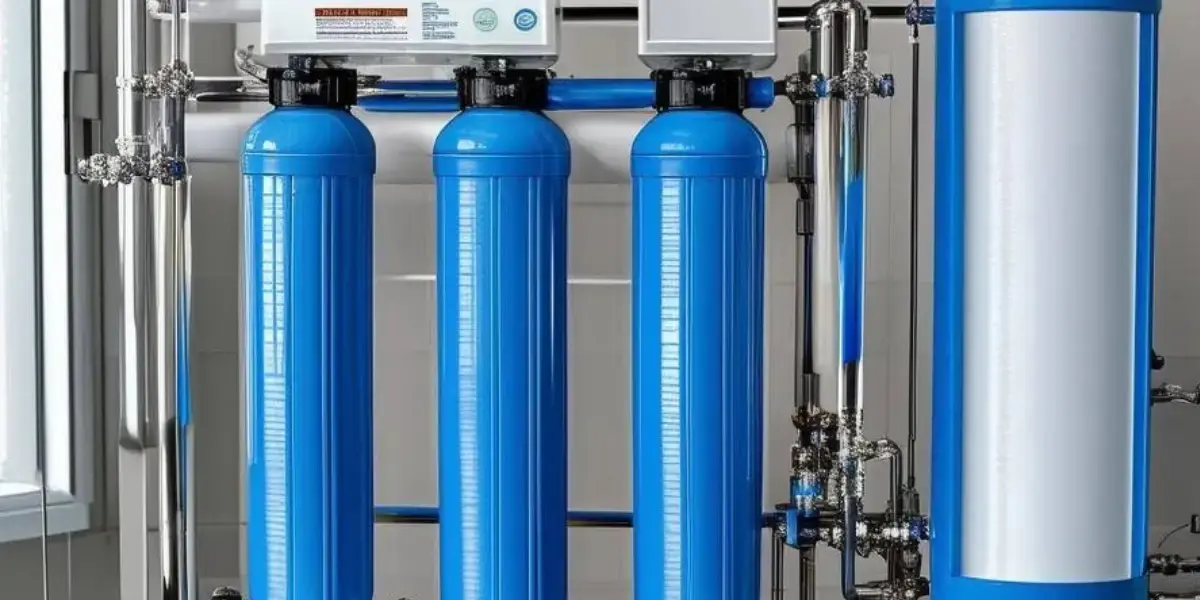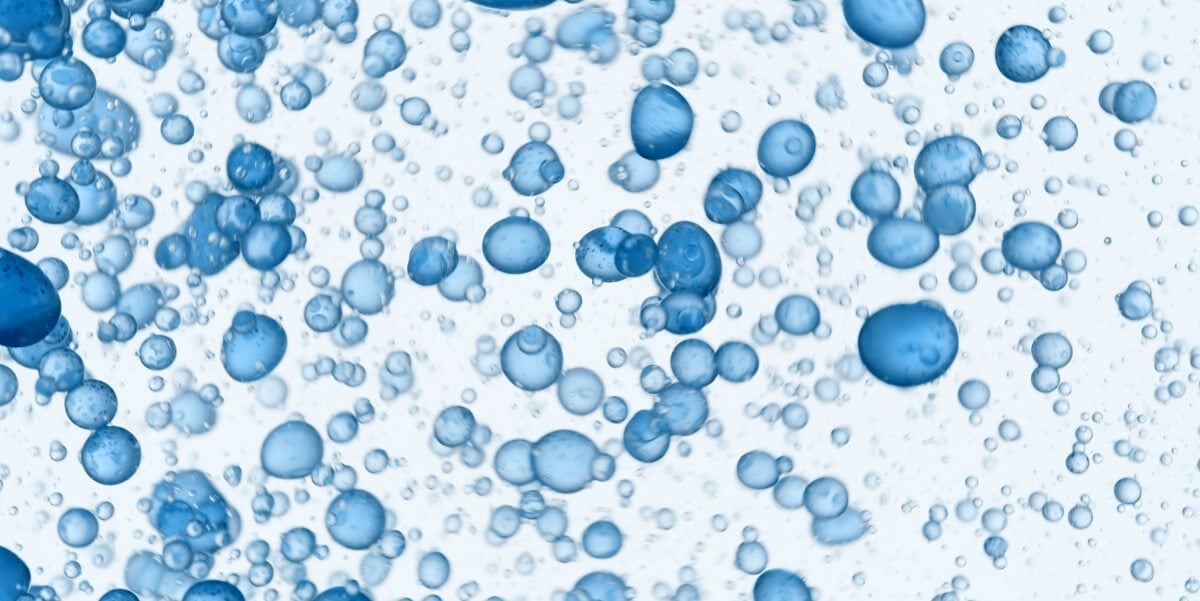Potable water quality and bacteria in water distribution systems
Summary
Access to clean and safe water is something we take for granted in the UK. But it is still the preoccupation of Water Safety Group team members, site facility managers and water hygiene technicians, all of whom are responsible for ensuring potable water within a building is safe for human consumption. We now understand the greatest risk to human health is from waterborne pathogens, viruses and infections existing largely between water entering our buildings and the water distribution systems in them, as well as the last few metres before the point of delivery. Effectively controlling bacteria as well as the other factors that impact water quality will help ensure that your potable water is safe for building occupants.
What happens to water before it reaches our buildings?
The water we use in our buildings starts out as rain, which either flows from rivers and streams or filters through the earth from groundwater. All this water is pumped into public treatment facilities where it goes through various treatment processes, including the use of chlorine and additives.
From here, water it is distributed to hospitals, houses, schools, commercial and industrial buildings and so on. At this point, water is usually fresh, clean and safe. However, it is far from contaminant-free.
The entire water distribution system – reservoir, well, pipe, storage tank and so on are natural homes to multiple species of bacteria, algae, invertebrates and viruses.
Perfectly safe water contains millions of non-pathogenic microbes in every glassful. The same is true of bottled water. Some contaminants are harmless or even good for human health. Some microbial communities might actually protect pipes from chemical and physical stress.
Understanding the role of microbes helps us better select suitable materials for pipework and ensure water distribution systems from point of supply (ie. mains-water or private borehole) to point of delivery (ie. tap/sentinel, shower, spray nozzle, feed-water tank etc) are protected.
What are the types of bacteria in water distribution systems?
Some microbes live perfectly naturally and are long-term inhabitants of water distribution systems but only cause illness to humans under certain conditions. Positive results for particular microbes, such as Escherichia coli (E. coli) indicate that pathogenic microorganisms may have entered the water distribution system.
A common characteristic of microbiological communities in water distribution systems is their propensity to form biofilms - layers of microorganisms that form on surfaces in contact with water. Some are described as planktonic (they float freely in the water), whilst others attach themselves to surfaces by secreting sticky polymers made of DNA, proteins and complex carbohydrates. These biofilms can become highly attractive host environments for opportunistic pathogens that disinfectants sometimes struggle to overcome.
Whilst many pathogens are microbes that live perfectly normally in water distribution systems and can remain totally or relatively harmless to human health, some people are more susceptible to ill-health.
Types of bacteria in water can include:
- Non-tuberculous mycobacteria (NTMs) such as Mycobacteria avium, M. intracellulare, M. kansasii and M. fortuitum. These organisms can cause serious pulmonary and lymphatic disease, skin ulcerations and other health issues.
- Legionella pneumophila is the causative agent of Legionnaires’ disease (pneumonia) and milder variation Pontiac fever. In the UK during the 12-months to 31 December 2018, a total of 814 Legionella pneumophila cased were reported / notified (Public Health England).
- Pseudomonas aeruginosa can occur in water distribution systems within buildings and infect ears, skin, eyes and in some cases, cause pulmonary disease. This opportunistic pathogen is the preoccupation of Patient and Water Safety Boards in hospitals up and down the UK and is extensively and continuously tested for in hospitals, care homes and buildings with particularly vulnerable inhabitants. Water is the source of infection.
- Escherichi Coli (E. Coli) can cause nausea, vomiting, abdominal pain and diarrhoea if consumed in contaminated water.
- Campylobacter Jejuni can be found in contaminated drinking water and cause infections with symptoms of cramping, diarrhoea, fever and pain.
- Hepatitis A is an infection and can be present in drinking water. Symptoms include dark urine, jaundice and stomach pain.
- Giardia Lamblia is a waterborne parasite that causes nausea, cramps, gas and diarrhoea.
- Salmonella is a common pathogen that can cause chills, fever, headaches and diarrhoea, and is infected through water and food ingestion.
- Cryptosporidium is a parasite that spreads through contaminated drinking water. It can cause severe pain and painful diarrhoea.
How do biofilms form in water distribution systems?
These and other infectious microorganisms can contaminate potable water and cause ill-health in humans, especially in children and vulnerable people with weak or impaired immune systems. Infectious microbes may be present in human and animal waste. Wells and other water sources can become infected by storm or drain water run-off from roadways, farms, discharges from sewage treatment plants or septic system discharges or water systems with poor water quality or bacteria control or systems where water purification and disinfection is not robust or reliable over a period of time.
As inhabitants for microbes, biofilms can contain many more bacteria cells than the water flowing through the pipes in your domestic water system. They can also act as reservoirs within which both bacterial and viral pathogens thrive. Bacteria can also live within amoebae and other parasites that can live in water distribution systems. In aquatic ecosystems, amoebae are predators that eat bacteria. However, some bacteria, including Legionella pneumophila and Mycobactererium avium, can resist digestion and grow and multiply within biofilms.
Many biofilms in water distribution systems pose no significant threat to human health, but they can still cause physical damage such as corrosion of pipes and blocking intake valves. They can also break down chemicals used to minimise microbial growth, while others may release nutrients that help sustain pathogens in water distribution systems.
What strategies can be used to reduce biofilms?
Common water treatment strategies often target biofilm formation without sometimes fully understanding what microbes may exist within your own water distribution system.
For example, the use of chlorine to kill pathogens may not reliably prevent opportunistic pathogens such as Mycobacterium avium which is more resistant to chlorine. Some disinfectants also have unfortunate by-products that become nutrient sources for opportunistic pathogens in water distribution systems. For example, chloramine is a by-product produced by some disinfectant treatments. But chloramine can also encourage the growth of certain nitrifying bacteria within biofilms that remove the disinfectant residual.
What other factors impact water quality?
Bacteria isn’t the only problem impacting potable water quality in water distribution systems. Other factors include:
- Pipe material and age
- Physical integrity of the water distribution system
- Storage facilities
- Water chemistry
We look at each of these and explore strategies for minimising risk.
How does pipe material and age impact water quality?
Water distribution systems in buildings are primarily unique to each structure. Water pipe material utilised will often vary from building to building and within individual systems. New pipes are usually constructed from PVC or lined, while older pipes tend to be manufactured from different materials, lined or unlined.
Fixings and installation quality can dictate system integrity, corrosion rates and aeration, flow and pressure. The composition and condition of these pipes can influence the chemicals that may be released into the system and the types of bacteria that colonise within water distribution systems and on pipe surfaces. Some pipe materials release bio-source compounds, such as iron, hydrogen and phosphate, that can encourage biofilm growth and multiplication of bacteria.
When it comes to pipe age, biofilms coating the interior surfaces of water distribution pipes often develop slowly and can take years to reach maturity. Old pipes can become heavily tuberculated, with depths of scale and rust exceeding 10 centimetres providing an even greater surface for biofilms to populate and an ever-enlarged source of nutrients to draw from.
How can you reduce scale and corrosion in pipework?
The key to maintaining water quality is reducing scale and corrosion. This can be achieved using water softeners and chemicals to coat the pipe interior.
Chemical treatments used to coat water distribution pipe interiors to control corrosion, scale and destroy biofilm work differently and can have different effects on biofilm. Some phosphates, for example, can stimulate bacterial biofilm growth and re-growth, while some silicates can inhibit it.
GENOX generating NEUTHOX®, an HOCl, is particularly effective at controlling biofilm. Approved for potable water, it is effective across most types and ages of water system pipes.
How does the physical integrity of the water distribution system impact water quality?
The physical integrity of the water distribution system can impact water quality in several ways.
Firstly, breaks and leaks in pipes can lead to low water pressure events that help bacteria cling to surfaces and encourage biofilm growth. According to the Consumer Council for Water (CCW), over 3 billion litres a day are lost in the UK due to pipe leaks.
Secondly, soil microbes can also invade and colonise the water distribution system. Sediment that enters, such as chloramines or copper, may serve as a source of nutrients. You can find a list of other common contaminants in this blog post.
Finally, new pipes and alterations to pipework may impact system integrity, pressure, flow rates and aeration.
Plumbing events and major incidents may require water distribution systems to be treated with emergency disinfection strategies, special sterilisation, or flushing. The Ultralox40®, for example, can be used for critical applications to provide highly effective mobile disinfection. It’s proven to reduce stubborn Legionella, TVC and Pseudomonas within mere weeks.
Mobile ClO2IX Catalytic Generators are also suitable for fast, reactive responses to trigger events. Chlorine Dioxide (ClO2) is increasingly being used for disinfection because it offers many advantages which you can read more about here.
What impact does the type of storage facility have on water quality?
Different storage facilities, including cold water storage tanks, can also impact hydraulic pressure and water age. Water tanks are common habitats for water microbes. Systems with large and multiple water tanks can lead to more and older water existing within a building water system. In turn, this can lead to decreased disinfectant concentrations as well as increased sediment accumulation, and therefore influence microbial growth.
What role does water chemistry play?
The source, stability, temperature, pressure and flow rates all make up the chemistry of the water and can each impact water quality.
Source water - Nutrients in water will influence water microbiology. Microbes feed on compounds, carbons and nutrients found naturally within the water. This becomes more important with water re-use as disinfection concentration becomes impaired over time. There are increasingly sophisticated and sensitive water laboratory testing services that can help determine what may be happening in your water chemistry and lead to better decision-making regarding water treatment and secondary disinfection.
Chemical stability - Water changes once treated and can respond in ways that favour microbiological growth. For example, disinfectant residual effectiveness can decrease at rates depending on water temperature and disinfectant dosing. Ammonia is released from the chloramine residual as it decays. Haloacetic acids and other disinfectant by-products can provide a source of nutrients for some microbes to grow. By-products such as chloramine can also encourage bacteria in water growth.
Temperature - Temperature heavily influences the microbiology of water. Different organisms respond differently to changes in temperature and seasonal temperature changes – which is why disinfection regimes are often stepped up or changed in hotter periods.
Water pressure, turbulence and flow rates - Changes in water pressure, turbulence, flow rates and flushing regimes can all impact the existence, re-growth and lifecycle of biofilms in the water distribution system. System design, the age of water, and the pressure and circulation rates of water all influence the effectiveness of disinfection strategies and water microbiology.
Routine water testing to monitor the above factors will allow you to identify when a new approach to treatment is required. This typically involves conducting chemical tests and comparing the results to control limits.
A checklist for controlling bacteria in water distribution systems
Are you doing enough to protect the potable water in your building?
Get to know your water system, the potential risks and how to control them with this helpful checklist:
- Do I know precisely what water chemistry is going on in my building(s) that may affect water quality?
- Do I need a risk assessment and/or a water safety plan?
- Is our potable water at risk from contamination (water system integrity, private water supply, source water etc.)?
- Do I know exactly what water microbiology is occurring on-site?
- Which microbiological control measure(s) are best suited for my application/building(s)?
- What disinfection strategies are available to me?
Choosing the best solution to protect your water
It is important for Building Managers and Duty Holders to understand the water microbiology occurring within their own water distribution system. They must continually monitor water chemistry, microbiology and bacteria in water. From here, Building Managers and Duty Holders can, if necessary, more reliably select appropriate methods of disinfection, secondary disinfection to protect water and human health.
At WCS Group, we use a number of key criteria to help determine which technology is best suited to protect your water. These include safety considerations, environmental implications, serviceability and more. We will work with you to guide you to the most effective solution for your system. Get in touch for a chat with one of our technical team.
To learn more about our water safety and disinfection methods, download our free eBook:
Topics: Water Treatment & Hygiene

Written by Alex Winter
Alex is a Marketing Contributor and has 5+ years in water treatment and ACoP L8 compliance and works across all six linked areas of the business; Water Treatment, Waste Water, Water Hygiene, Air Hygiene, Engineering and Legionella Training.





